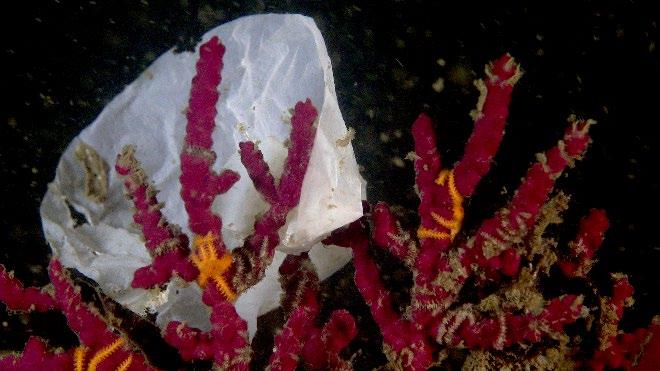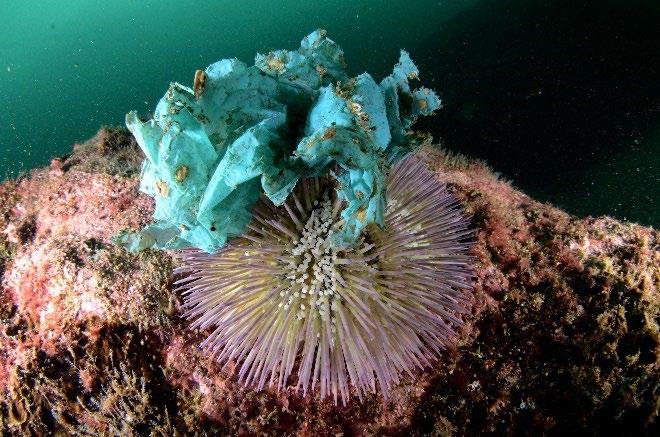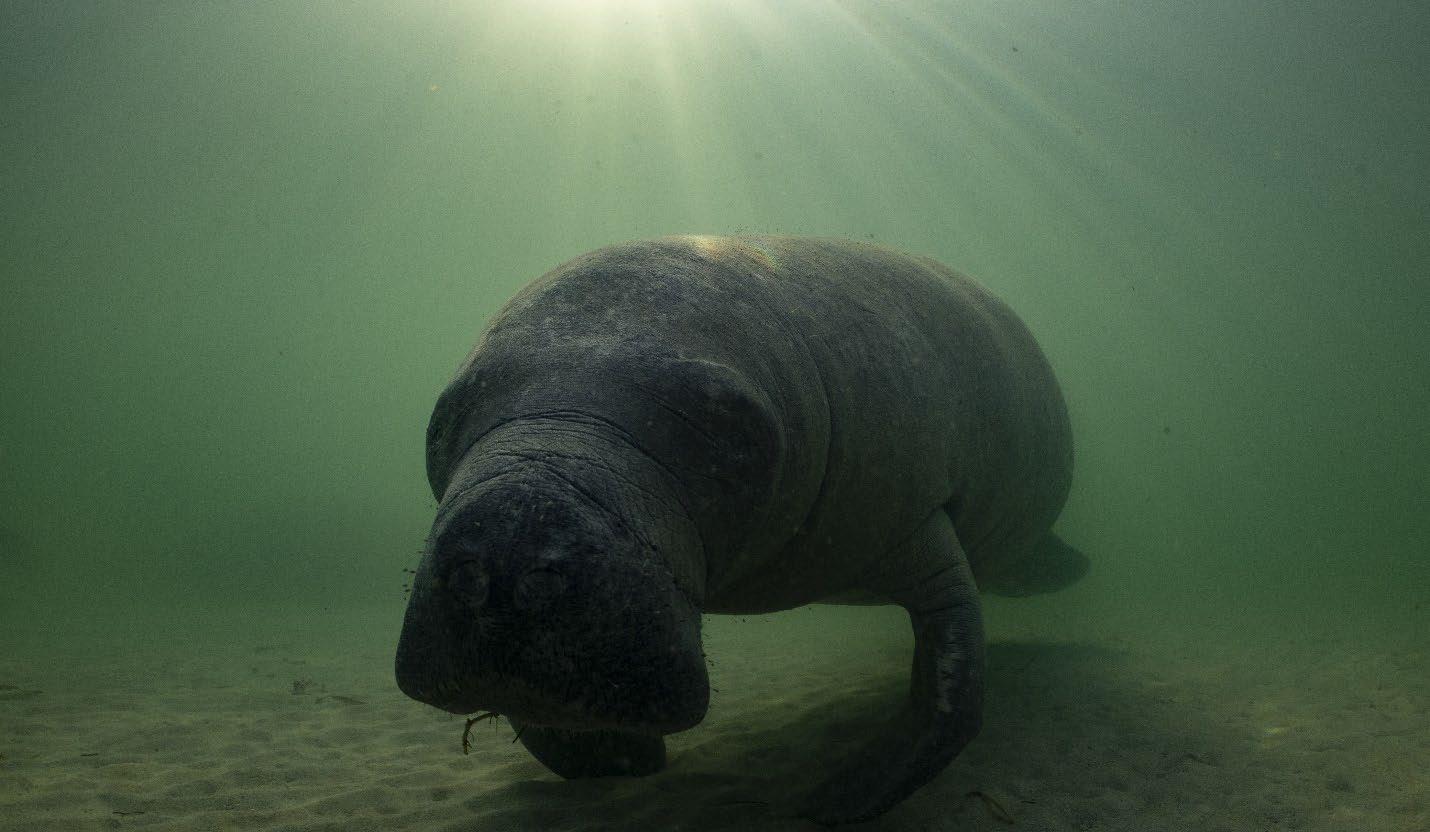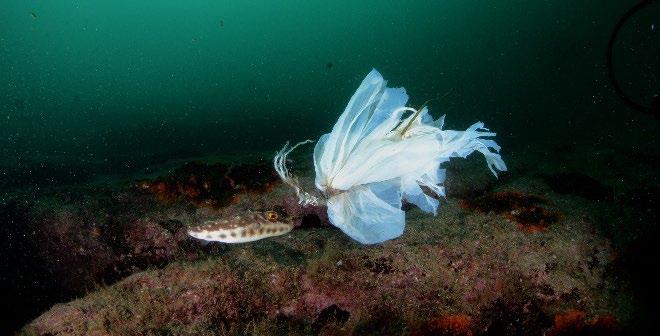
2 minute read
Impacts of Plastic on Marine Habitats and Species

Oceana’s seafloor surveys confirmed the presence of plastic waste within diverse marine ecosystems adjacent to popular tourism destinations in all four countries where our expeditions were carried out. Furthermore, during these surveys, we observed some of the impacts that this plastic waste is having on marine habitats and species and identified possible threats.
The seafloor areas we surveyed across all expeditions were characterized by a range of different habitat types with both soft and rocky bottoms. We documented plastic resting on, covering or entangled on many of these seafloor habitats, including corals, seagrass meadows, and in algal forests. Natural structures such as those that make up these habitats act as obstacles to the circulation of sea currents and accumulate plastic waste transported by the sea. Plastic can easily get caught on the complex structure of sea fans, sponges, bryozoans, and algae, and during our expeditions we observed that these species were generally heavily impacted by plastic.
Since green algal meadows have a sediment retention rate similar to sea fans, they also retain plastic waste at a high rate. 31 In Brazil, Mexico, and Spain, we found areas covered by green algae polluted with plastic. In the Mediterranean Sea, we also found that on coralligenous bottoms, plastics were a common occurrence, as well as other items related to fishing that had become hooked onto the reefs. 32 Coralligenous reef ecosystems are widely distributed in the area and support a great diversity of species. In Mexico, Spain, and the U.S., seagrass meadows were found to be heavily impacted by plastic Plastic covering all of these habitat types may interfere with spawning and feeding, and inhibit photosynthetic activity.
In Brazil and Spain (off the Valencian coast), one such habitat that we found to be visibly affected by plastic were sea fan (gorgonian) forests. In line with our observations, a recent study has shown that these forests’ capacity to retain sediment also increases the concentration of plastics. 29 Studies on the impacts of plastics on sea fans in other parts of the Mediterranean have detected abrasions, an increase in epibionts (species that live on their surface), and increased mortality. Plastic contamination is also considered to lead to the local disappearance of gorgonian forests. 30
In areas dominated by sandy or muddy bottoms, species that live in the sediments create galleries or burrows, and plastic finds its way into the small gaps and elevations that are features of these structures. In Spain off the Valencian coast, the burrows of small fish like gobies and angular crabs were observed to be particularly affected by plastic in this way.
Plastic produces many highly varied negative impacts on marine species, ranging from effects on health (including asphyxiation, ingestion, dissolution of toxic chemicals, and physical damage) to behavioral changes in animals. 33 During our surveys in all countries, wildlife, including several threatened and protected species, were observed in plastic-polluted areas, at risk of ingesting plastic fragments. Various species of flora and fauna including bryozoans, corals and algae, were found growing on plastic, or entangled in plastic debris. Some species (e.g., sea urchins in Brazil and Spain) were observed using plastics instead of organic materials to cover themselves for protection, and others (e.g., red algae and oysters in Spain) were seen settled on moving plastic pieces that can be transported outside their habitat.

Overall, the findings from our expeditions demonstrate that the excessive use of plastics is directly impacting delicate underwater habitats and the species that live in them. These results add urgency to the need for plastic-free coastal regions, restaurants, and tourist resorts, and for significant reductions in the production of singleuse plastics.












